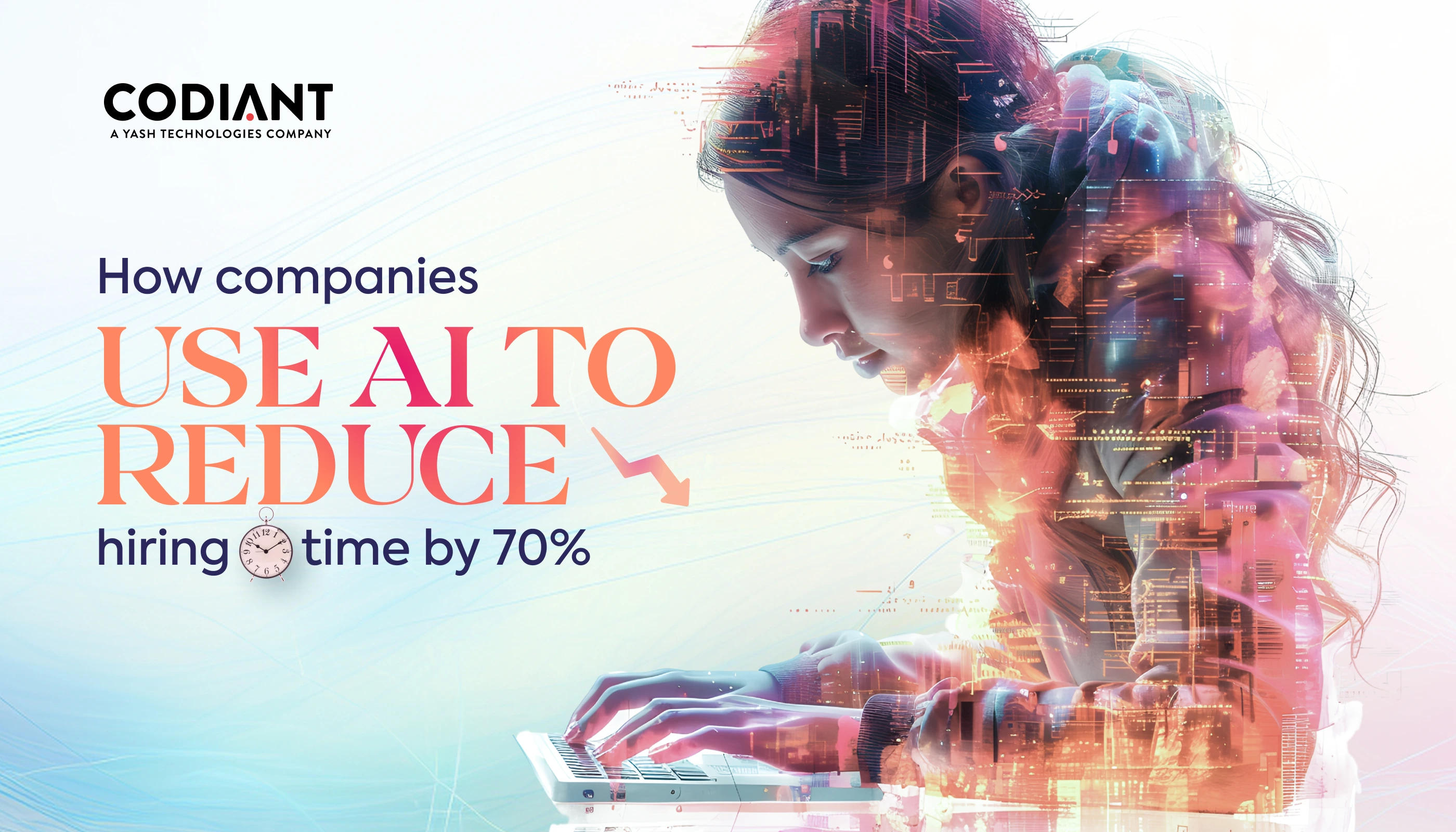The Impact of AI on eCommerce: Trends and Predictions
Table of Contents
Subscribe To Our Newsletter

Artificial Intelligence is bringing tremendous change to various sectors and into our daily lifestyles. The vast ability of learning through data and overcoming harsh challenges is what propelling immense growth in fields such as healthcare, finance, transportation, and entertainment, etc. These technological changes have brought about a highly influential impact in the eCommerce sector also.
With AI incorporated in eCommerce, businesses can develop targeted shopping experiences, automate ordinary tasks and make deeper customer preference-informed decisions. As time progresses with development in AI technology, its importance will increase significantly in the world of eCommerce.
It is, indeed quite evident how AI transforms the face of eCommerce with compelling statistics. McKinsey & Co, for instance, found that using AI can increase business revenue by up to 20%. Again, Amazon credits 35% of its sales each year to AI product details recommendations.
Now, as eCommerce expands in the global market, the retailers face various challenges. Quality although is no longer sufficient to survive in this energetic environment. In the case of expanding globalization through e-commerce, businesses must find unique ways to stand out and get the attention of the customers in order to survive in this changing environment.
This is where AI comes in. In this blog, we will discuss how AI nurtures the improvement in customer journeys with private shopping experiences that enhance loyalty and propensity for returning business. We will also discuss how AI can sort out internal processes and thus improve operational efficiency and competitiveness. Finally, we explore some future trends in eCommerce in relation to AI developments.
AI in eCommerce space is not a fad or a trend but rather a strategic necessity. Retailers would use these technologies to improve efficiencies in operations as they continue to drive meaning and meaningful relations with customers toward growth in a tougher competitive market.

How is AI changing E-commerce?
AI definitely affects e-commerce in several direct aspects. First, AI makes the shopping process more personalized. By analysing data of customers, AI will suggest what a person is likely to buy according to his preferences and so make shopping much more relevant and interesting for the client.
For example, if a buyer constantly buys sportswear, AI will suggest new arrivals or bestsellers.
It also enhances customer service by bringing on board chatbots. Such bots can respond to customer queries at whatever time in the day, responding fast and offering support without the presence of a particular person. This eventually solves the queries in the shortest time possible, thus improving customer satisfaction.
AI optimizes the management of inventories. It predicts trends in demand and helps businesses stock enough products, thereby reducing overstock and stockouts.
Lastly, AI helps to make a campaign effective. It can analyse which ads perform well and adjust strategies immediately to contact the right target audience better.
AI in overall adds a personal, efficient, and responsive touch to e-commerce, providing a better user experience for businesses as well as customers.
Current Trends in AI and eCommerce
1. Personalized Shopping Experiences
One of the biggest eCommerce trends today is AI-powered personalization in shopping. Algorithms of AI scan user behaviour based on browsed history, past purchases, even the time spent on specific product pages, and recommend those products that correspond with the user’s preference.
Examples of Companies Successfully Implementing Personalized Recommendations:
- Amazon:
The recommendation engine of Amazon can be considered as a prime example of AI in action, because it uses collaborative filtering, content-based filtering, and deep learning to suggest products, customers are likely to buy. Much of the sales and satisfaction of the customers on Amazon are caused by their personalized approach.
- Netflix:
lthough fundamentally an internet media streaming service, a benchmark for personal experiences is Netflix’s recommendation system. On the basis of viewing and liking patterns, shows and movies are sent to the users which might be of their interest, in turn, keeping them engaged and even subscribed.
- Spotify:
Spotify uses AI to curate personal playlists such as “Discover Weekly” and “Release Radar.” On the basis of listening patterns, the new music that is actually a fit with respect to the taste is suggested to the customers by Spotify, thus making their experience complete.
Codiant helps MENA businesses expand with remote IT hiring, offering global talent access to overcome local shortages, ensuring quality, timely results, and cost efficiency.
- Stitch Fix:
This is an e-commerce personal styling company that uses AI to make dress or other clothing suggestions for the user. The stylist, goes through and sharpens the AI suggestions according to what the user likes/dislikes.
These examples show how AI-driven personalization can enhance customer engagement, increase sales, and build brand loyalty in the eCommerce sector.
2. Chatbots and Virtual Assistants
AI-powered chatbots and virtual assistants change the face of customer service for eCommerce. It is the wise machine that can easily accomplish multi-typed tasks such as answering what frequently comes up in queries, guiding orders through tracing to return processes.
AI-Powered Chatbots’ Role in Customer Service
Immediate Responses:
Chatbots can provide immediate responses to the queries of customers by reducing wait time, thereby increasing satisfaction.
- Very Frequently Asked Questions:
They can resolve very frequently asked questions so a human agent will not have to waste their precious time in complicated issues to take care of minor issues.
- Personalized Communications:
The interpretation of customer data enables chatbots to give customers personalized recommendations and support that eventually support enriching the general shopping experience.
Rewards of 24/7 Customer Support and Improved User Experience
- Always Available:
Chatbots are designed to be available 24/7, therefore customers receive their support at any time without any concern about the local time zone.
- Consistency:
They give responses in a consistent manner so that all customers get the same level of service.
- Cost-Effective:
The operational cost is reduced as customer service as a whole will not require a large team of people.
- Improved User Experience:
Chatbots work with rapid and efficient service, which improves the user’s experience altogether, which leads to more loyalty and customer satisfaction.
Companies like H&M and Sephora, as well as Domino’s, have already installed chatbots, which demonstrates excellent leverage of AI over the upliftment of customer interactions in eCommerce.
3. Visual Search and Image Recognition
AI is revolutionizing the way users identify products online through visual search and image recognition technologies. With these technologies, users can search items using images instead of the old text that has been used in most cases.
How AI Enables Visual Search Capabilities
- Image Recognition:
AI algorithms scan the content of images to detect objects, patterns, and features. This is a technology that will identify products in photos and relate it with other similar items in an online store.
- Deep Learning:
Deep learning models-convolutional neural networks or CNNs-are trained on extensive datasets of images so more accuracy is achieved in the recognition and categorization of the products.
- Mobile Integration:
Most eCommerce sites have visual search integrated into mobile applications so that users can either take a picture of an item to eventually return with results on similar products.
Impact on User Convenience and Shopping Efficiency
- Easy Use:
The visual search makes shopping easy because it empowers consumers to find exactly what they’re looking for, even when words fail.
- Fast Search:
Users will get their target product immediately through taking an image thus saving their time that might be spent in searching for the products.
- Improved Discovery:
Visual search helps find products users that they may not find through any other form of text-based search.
- Better Accuracy:
Since image searches would be very accurate, visual search would make sure what the user exactly needs is found, and thus increase satisfaction and decrease returns.
All these features make online shopping easier and fast with the help of visual search technology which paved the way for the larger stream of improvement to the eCommerce experience through AI.
4. Inventory Management and Demand Forecasting
AI is used in maximizing the inventory levels and predicting the demand levels through providing businesses with the best practices to balance out both the supply and the demand.
AI’s Role in Optimizing Levels of Inventory and Prediction Of Demand
- Data Analysis:
AI algorithms analyse the vast amounts of data such as sales history, market trends, and seasonal patterns amongst others so that the appropriate future demands are comprehensively forecasted.
- Real-Time Monitoring:
AI provides immediate inventory insights. Businesses can respond in no time regarding any sort of change in demand.
- Automated Replenishment:
AI will be able to program the replenishment automatically, thus providing an effective check on overstocking or understocking.
- Demand Forecasting:
AI will accurately forecast and predict orders with the help of machine learning models.
Business Case Studies – Relying on AI-Driven Inventory Management
- Walmart:
Walmart uses AI in the supply chain and inventory management for optimization. Walmart can predict the demand analysis from different sources of data, thus making its inventory adjustable, decreased by waste, and efficient.
- Zara:
The clothing retailer Zara uses AI for its stock management and demand forecasting. AI helps Zara respond immediately to changing fashion trends when it needs them most.
- Amazon:
Amazon employs AI for managing its huge stock spread across a large number of warehouses. AI-based demand forecasting enables Amazon to have ideal stock levels that help to minimize possible stockouts as well as overstocking.
- Unilever:
With the supply chain optimization, inventory management, and its use of Unilever in AI, the firm can reduce stock surplus while smoothing the whole supply chain by better forecasting of demand.
5. Dynamic Price Strategies
Dynamic pricing is another important trend related to AI and eCommerce, which helps businesses change their prices in real-time by the flow of conditions in the market and make maximum revenue.
How It Works
- Data Analysis:
AI systems collect huge volumes of data, including market trends, competitor pricing, customer demand, and inventory levels.
- Price Optimization:
On the basis of the analysis provided by the machine learning algorithm, they can find the best pricing strategies that maximize revenue and profitability.
- Real-Time Adjustments:
AI allows firms to make price changes quickly due to changes in the real-time conditions of the market and thus helps firms to be even more competitive and achieve higher profits.
Examples
- Uber and Lyft:
These ride-sharing companies change their prices based on demand, traffic, and time of day, among others.
- Retailers:
Many online and also physical stores rely on dynamic pricing that AI furnishes such as changing product prices over time based on customers’ behaviour, inventory, and competitor pricing.
- Airlines:
Airlines change the ticket price most often based on booking time, the popularity of the route, or the demand.
Predictions for the Future
Improvement in Customer Insights:
The next level improvements in AI will introduce much deeper insights into customer behaviour. Businesses that will implement these improvements would be able to develop very customized marketing strategy against each customer with really high accuracy.
Voice Commerce:
Voice commerce will surge with increased voice assistant’s usage such as Siri, Alexa, or Google Assistant. With the natural language understanding capabilities of AI continuing, voice shopping will be done more with vividness, making people naturally interact conveniently with the brands.
Augmented Reality and Virtual Reality:
When used with AR and VR, the future will definitely be of AI, providing an immersive experience for the consumers by merging the real with the virtual world. The supporting features would include virtual try-ons and also interactive displays for products combined with recommendations personalized to enhance the experience of shopping.
Improved Fraud Detection and Security:
It is possible to see the continuous improvement in the fraud detection and security of eCommerce through AI, based on the analysis of big data, which leads to the discovery of suspicious activities and timely prevention of fraudulent behaviour, thereby increasing the confidence of customers while protecting the businesses from financial loss, and with more advanced sophisticated fraud prevention techniques in the future.
Types of AI used in E-commerce
AI is changing the way online shopping works. Here are some key ways AI is making a big difference:
Personalized Product Suggestions
While shopping online, you must have seen that websites recommend products that you have previously viewed or purchased. This is an example of Artificial Intelligence in use. This uses previous shopping habits to determine potential items that may appeal to the user. For instance, if a user frequently browses for sports equipment, the user will be shown more items that are primarily sports-related.

Retailers leveraging advanced personalization technologies like Wardrobe AI are redefining the shopping experience by offering smarter, data-driven recommendations tailored to each customer’s unique style. Those who adopt AI-powered personalization often see remarkable growth, with some reporting up to a 40% surge in sales and stronger customer loyalty. Yet, despite these impressive results, only a limited number of retailers have embraced this innovation—leaving immense potential for others to capitalize on this untapped opportunity.
Smarter Search Features
Additionally, artificial intelligence enhances search features on retail websites. For instance, when users enter the word “hats” in the search field, AI is advanced enough to consider that the user is probably looking for wedding hats, as it can guess that a special occasion is in order. Thus, it becomes more convenient for you to look for whatever you need in a very limited period of time.

To put it simply, whenever you leave the site after a thorough search pocketing none of their items, and especially making it all the way to the checkout without a purchase, AI minimizes such an incident from happening. This is crucial since it is normal for a lot of people to leave items in their cart without completing the purchase.
Better Logistics and Forecasting
AI isn’t just for improving what customers see; it also helps businesses manage their operations. For example, AI can predict which products will be popular in the future and help stores keep the right amount of stock. It can also adjust prices based on supply and demand, ensuring you get the best deals.
AI helps streamline warehouse work and logistics, making it more efficient and cost-effective. This means faster deliveries and fewer delays, which is something most consumers appreciate.
AI Assistants
AI chatbots are used to handle customer questions and issues. They can work 24/7, answer complex questions, and even provide real-time updates about your order. This helps retailers by automating tasks that would otherwise require human staff.

These AI assistants can also suggest additional products or services based on your preferences. For instance, if you’re buying a gift, the chatbot might suggest wrapping paper or a card to go along with it.
Conclusion
As we’ve seen, AI is making a big difference in eCommerce product development. It builds personal shopping experiences, delivers improved customer service, detects and prevents fraud, and has an impact on how supply chains work.
With AI technology getting better, we’ll likely see even more exciting uses in eCommerce, like highly personalized ads and virtual shopping experiences.
The future of eCommerce will be shaped by AI and ecommerce mobile app development trends, enabling brands to deliver highly personalized, app-based shopping experiences that convert.
Frequently Asked Questions
AI can make shopping more personal by looking at customer data and suggesting products based on what they like and what they’ve bought before. It also helps with customer support by using chatbots that reply instantly and assist customers anytime making the shopping experience better and keeping customers happy.
AI doesn’t have to be very expensive. You can start with simple tools like chatbots or product suggestions, and then add more as your business grows. In the long run, AI can help you save money by improving customer experience, reducing costs, and increasing sales.
AI can predict which products will sell more and when. This helps you keep the right amount of stock, so you don’t run out of popular items or waste money on things that don’t sell. It can also help automate ordering new products when you’re running low.
AI-powered dynamic pricing automatically changes product prices based on things like demand, competitor prices, and stock levels. This helps keep your prices competitive, maximizes profits, and allows you to quickly adjust to market changes without losing customers.
Yes, AI can help increase sales and conversions by recommending products that suit individual customer preferences based on their browsing and buying behaviour. It also helps improve marketing efforts and provides better customer service through tools like chatbots. Additionally, AI can identify valuable customers and focus on retaining them, which encourages repeat purchases and builds brand loyalty.
Featured Blogs
Read our thoughts and insights on the latest tech and business trends
How to Integrate AI in Recruitment and Cut Hiring Time by 70%
- November 13, 2025
- Artificial Intelligence
Recruiting teams face a clear operational challenge: too much manual work and not enough qualified talent reaching the finish line. Even with modern ATS systems, most hiring workflows still depend on human-driven screening, coordination, and... Read more
How to Build AI Agents That Can Speed Up Your Work and Reduce Other Expenses
- November 10, 2025
- Artificial Intelligence
Businesses today are looking for faster ways to work and smarter tools that cut costs. That’s why AI agents are quickly becoming a key investment for companies of all sizes. These autonomous systems can perform... Read more
How to Build a Logistics and Transportation App Like Aramex?
- November 6, 2025
- Logistics & Transportation
In a Nutshell: A logistics app like Aramex helps businesses manage deliveries, track shipments, and serve customers better. Technology is now needed in logistics because customers want fast delivery and real-time tracking. A logistics app... Read more





